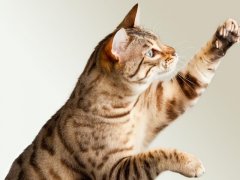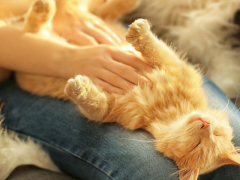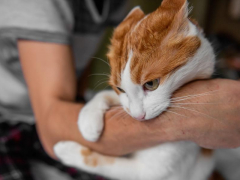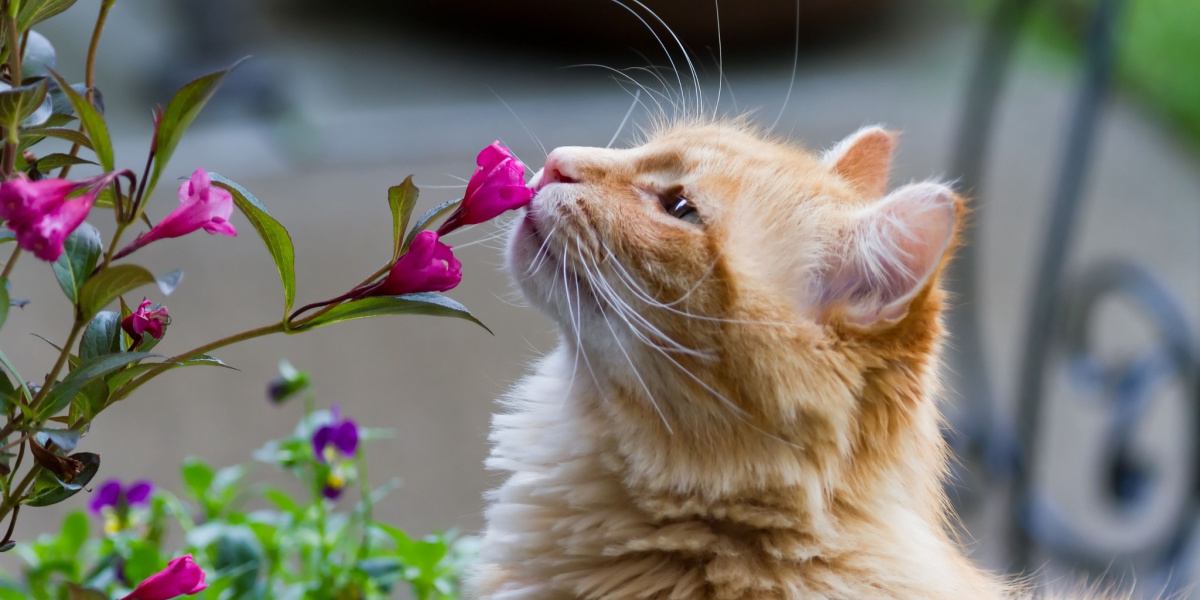
If you’re wondering if cats have a good sense of smell, the simple answer is yes! In fact, you might be surprised at just how good your cat’s sense of smell is. There’s a lot more to a cat’s nose than meets the eye.
All felines rely on their five senses when they are exploring the world around them, but the most important sense for your cat is their sense of smell. Cat’s senses have adapted over centuries to aid them in many aspects of their survival. They have fine-tuned their ability to hunt their prey and also avoid predators.
Cats actually use those adorable button noses a lot more than we realize. This article will tell you all about how they do this and why their sense of smell is so important. Read on to find out more.
Also Read: Understanding Your Cat’s Five Senses
The Most Important Sense For Cats
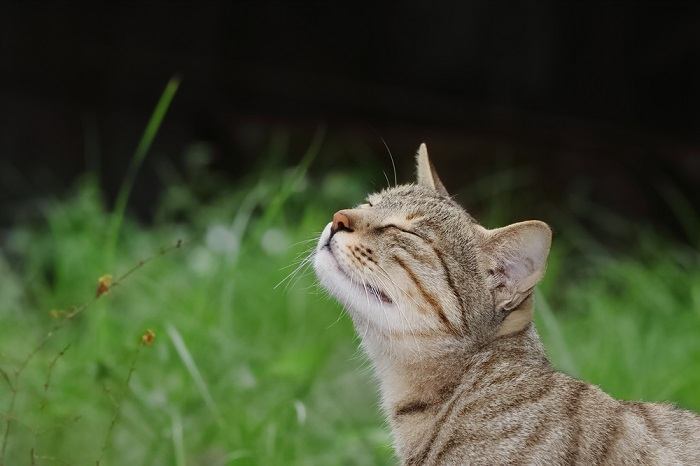
Cats can smell much better than humans—they have 40 times as many scent receptors as people do.
Cats have an incredibly acute sense of smell. The inside lining of their noses (also called the olfactory epithelium) is estimated to be 20 centimeters squared, compared to a human’s, which is approximately 4 centimeters squared.
It’s also believed that cats have more than 200 million scent receptors in their noses. To put this into perspective, humans only have 5 million. That’s more than 40 times as many scent receptors as humans.
Not only that, but cats also have the capacity to smell chemicals called pheromones, which humans cannot. This is technically one of their superpowers, another reason cats are so amazing!
Cats have two mechanisms for detecting odors or chemicals in their environment. They have the normal scent (or olfactory) receptors, which humans also have, but they also have an extra organ called the vomeronasal organ, which sits on the roof of the mouth.
This organ, which also goes by the name of Jacobson’s organ, allows your cat to detect pheromones released by other cats and is extremely useful in helping them gather information about others in their world, including you, their owner.
If you have ever caught your cat pausing and holding their mouth open, they are actually investigating a new smell by using their tongue to move scent molecules over the vomeronasal organ. They often curl their upper lips up too, this is called the flehmen response.
A fun fact about cat noses: Cats have unique nose prints, just like humans’ fingerprints‚—no two cat noses are the same!
Also Read: Why Do Cats Stick Their Tongue Out?
How Do Cats Use Their Sense Of Smell?
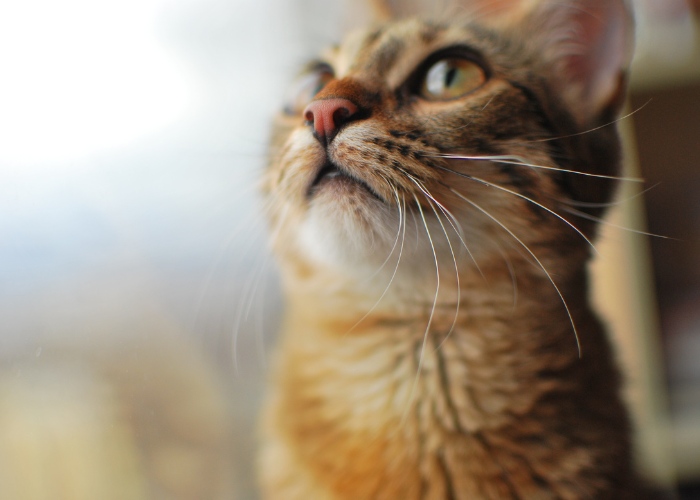
Since a cat’s sense of taste is somewhat limited, their sense of smell is what drives their appetite.
Cats rely on their sense of smell as soon as they are born, primarily to bond with their mother and recognize their first source of food and comfort. As they grow, they learn to use their smell to hunt and gain important information about their environment, for example, any prey or predators in close proximity.
The detection of pheromones as mentioned above means that your cat can identify a potential mate. Pheromones are also important for social interactions and marking territory.
Cats only have a small number of taste receptors, and their sense of taste is not particularly strong. It’s actually their sense of smell that stimulates their appetite and lets them know they are hungry. This is one of the reasons if your cat gets respiratory infections in their nose or chest, they often stop eating.
Also Read: Do Cats Have A Sense Of Taste?
A cat’s sense of smell is so sensitive that many things we come into contact with during our day might upset our cats, such as smells from other animals or unfamiliar smells that they haven’t come across before.
How Does Your Cat Communicate Using Scents?
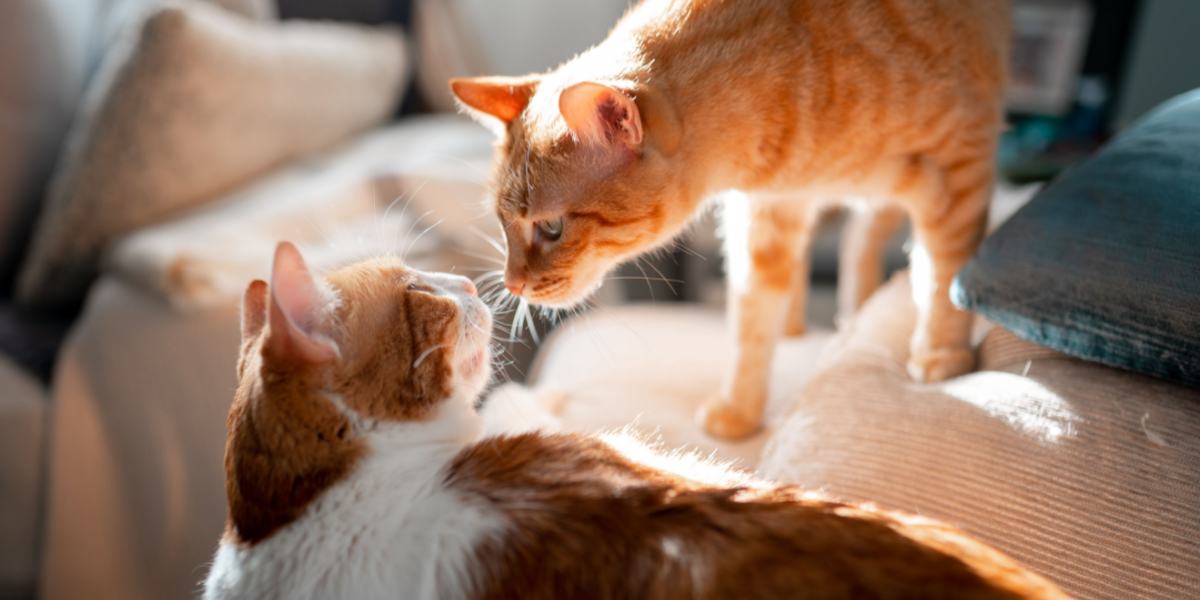
Cats use the scent of pheromones to send and receive information to and from other cats.
You may have been on the receiving end of some nose bumps or face rubs from your cat or seen them do this behavior (called marking) on furniture or objects in your home. This is a very clever way that your cat marks things or people as they rub off some of their scent to make it more familiar to them.
The scent contains chemical messages called pheromones, and they help to reassure the cat so they feel safe in their world. Depending on the situation, these pheromones can be used to communicate a variety of different messages.
Also Read: Do Cats Have Scent Glands In Their Paws?
This method is also used to mark and secure their territory to warn off other threatening cats, to help them bond with other friendly cats in the household, or to soothe themselves or show they are feeling content. Cats also use scent-marking to let a potential love interest know they are ready to mate!
If a cat feels threatened or stressed in their environment, they sometimes make a “dirty protest” by defecating somewhere unusual. This is sometimes called middening. They also might scratch things they aren’t supposed to.
Some dominant cats use it to let their neighbors know of the boundaries of their territory, other anxious cats sometimes leave feces or spray urine on their owners’ possessions to attempt to mix their scent and the human scent to relieve stress and anxiety. So if your cat does this, try not to take it personally, there is a reason for these behaviors.
Also Read: 5 Ways To Build A Stronger Bond With Your Cat
Where Does Your Cat’s Scent Come From?
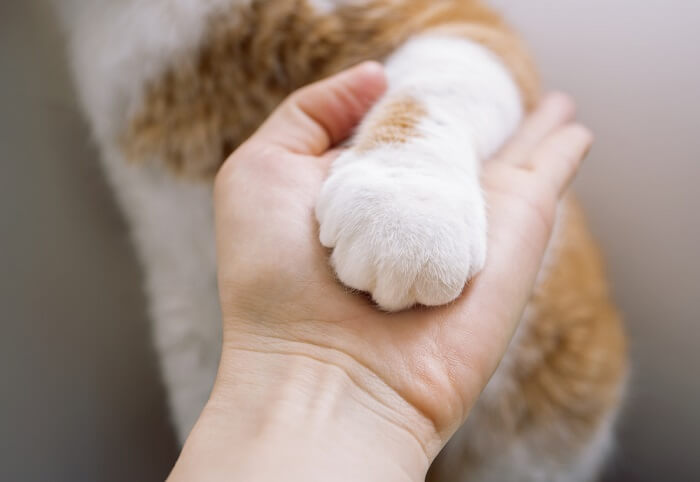
Cats have pheromone-releasing scent glands all over their bodies, including their paws.
Cats have scent glands in lots of places around their body including:
- Under the chin
- On the whiskers and cheeks
- On the lips
- On the length and base of the ears
- On the paw pads
- On the flanks
- At the base of the tail and along the tail
When cats rub themselves against things, these glands, called sebaceous glands, release the pheromones into the environment.
How Can I Help My Stressed Cat Using Scents?
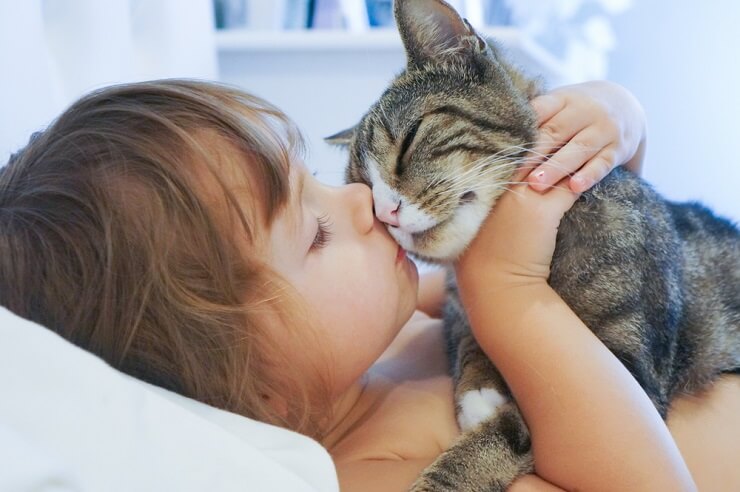
Synthetic pheromone sprays or plug-in diffusers can calm and reassure cats during stressful situations.
Cats can often become stressed through a lack of routine or predictability in their social or physical environment. Cats can be comforted in many ways using familiar scents. If you are taking your cat somewhere they have never been before or perhaps that might be stressful for them, such as a cattery or your vets, you can take something with them in their carrier that smells of home, it will be sure to comfort them.
Also Read: Stress In Cats: Causes, Symptoms, & Treatment
You can also use synthetic pheromones that are available to buy as sprays or plug-in diffusers for your home, which can help calm and reassure your cat in a potentially stressful situation. If there is soon to be a new arrival in the household (for example, another human family member or a new pet), you can bring home a piece of clothing or other object that smells of the new arrival to give them time to explore and adjust to the new scent before the first meeting actually happens. This is especially useful for new babies or other cats being introduced.
Also Read: How Do You Train A Cat That Won’t Listen?
Final Thoughts
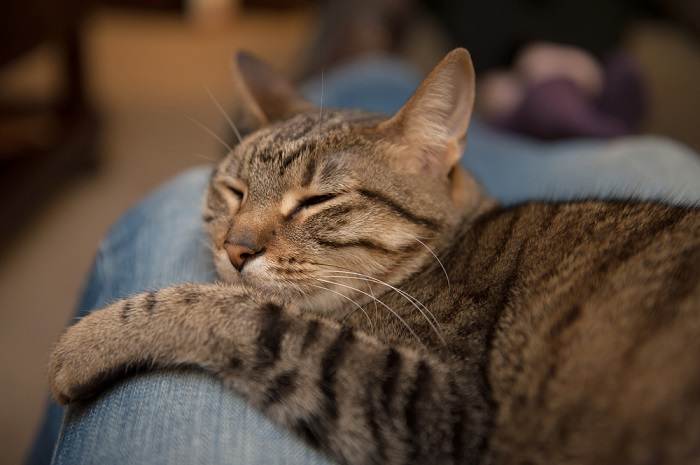
Cats use their sensitive noses for more than you might expect.
Cats have a very well adapted and fine tuned sense of smell. Odors heavily influence their behavior through various complicated interactions. They gain so much information about their world through their nose. Scents and pheromones provide them with vital information to enable them to survive and thrive. A cat’s ability to detect scents and smells are crucial to a cat’s day to day life and not to be sniffed at!
Also Read: Nose Cancer In Cats: Causes, Symptoms & Treatment
-
Ellis, S. L. H (2010) The influence of olfactory stimulation on the behaviour of cats housed in a rescue shelter. Applied Animal Behaviour Science Volume 123
-
Herrick, F. H (1922) Homing Powers of The Cat. The Scientific Monthly. Vol 14, No. 6 (Jun., 1922), pp. 525-539
-
Nielson, B.L (2015) Behavioral responses to odors from other species: introducing a complementary model of allelochemics involving vertebrates. Front NeuroSci V.9
-
Padodara, R (2014) Olfactory Sense in Different Animals. The Indian Journal of Veterinary Science. Vol 2 (1)
-
Shreve, K.R.V (2017). Stress, security and scent: The influence of chemical signals on the social lives of domestic cats and implications for applied settings. Applied Animal Behaviour Science Volume 187
-
Zlang, L (2022) Dealing With Stress in Cats: What Is New About the Olfactory Strategy? Front Vet Sci V.9
-
https://cdn.citl.illinois.edu/courses/ansc207/week2/special_senses/web_data/file6.htm)
-
https://www.jstor.org/stable/6677#metadata_info_tab_contents

